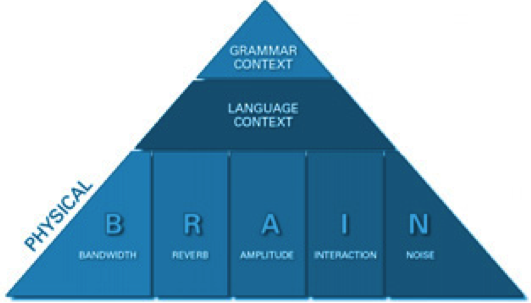Trefor.net welcomes “VoIP Week” contributor Jeff Rodman, Polycom‘s Chief Technology Evangelist. Since co-founding the company in 1990 Jeff has been instrumental in the realization of Polycom’s iconic products for voice, video, network communications, and other media.
When was the last time you used a conference phone? Today or perhaps yesterday? For a good many of us it likely hasn’t been more than a day or two. For many of businesses today, open-air voice conferencing is as ubiquitous as the traditional handheld or headset.
To ensure maximum efficiency and productivity during conference calls, it is critical for the speech to be clearly understood. We’ve all had the unfortunate experience of struggling to work out what someone is saying, be it due to noise, their distance from a microphone, or just an unfamiliar accent. Our minds are good at compensating for missing words and blurred sounds, but the more time they spend figuring out what might have been said, the less well we understand is actually being said (as seen in this short video). Therefore, it is vital that the physical “what we hear” stage be as clear and as accurate as possible.
Five aspects of speech audio work together to make or break a clear, understandable conversation: Bandwidth, Reverberation, Amplitude, Interactivity, and Noise. These five aspects, taken together, are called the BRAIN model of practical audio communications. The job of any conferencing system is to tune and balance these aspects automatically to provide the best possible hearing experience for the parties on both ends of the call.
Bandwidth: The Plain Old Telephone System (POTS) most of us grew up with carries less than half the information inherent in human speech, and this shortcoming was unthinkingly brought over into early IP telephones. However, newer system greatly enhance intelligibility through the implementation of HD Voice, making conversation much easier to follow and less fatiguing. The standards-compliant IP phones and conference phones that deliver this much higher audio bandwidth offer amazing clarity that rivals the best video systems, making it seem that you are in the same room as those on the other end of the call
Reverberation: Room echo at either end of a phone conversation makes the sound die down more slowly, thus smearing words together. While a “perfect” solution would include acoustic wall coverings for absorption, wall-mounted diffuser panels, and a personal headset or lapel mics for every participant, the reverberation problem is much more easily addressed via a multiple-microphone conferencing system that can intelligently steer and focus the pickup patterns to dynamically match the location of each talker in a room.
Amplitude: Insufficient amplitude, or loudness, can make it difficult to hear a talker. Repositioning the talker and listener are obvious solutions, but are not always practical. Conference phones are available, though, that can automatically adjust microphone gain to greatly help in these situations, and the difference in ease of understanding can be breathtaking.
Interaction: Interactive speech between distant groups can be difficult to conduct for a number of reasons, due in no small part to the absence of a true full-duplex system that allows for transparent interactive speech. A conference phone with good full-duplex technology enables talkers at both ends to be heard clearly without any delays or distractions. Beware, though, as although many speakerphones today lay claim full-duplex performance it is a very sophisticated feature that few can actually deliver.
Noise: Common noise sources share much of the same spectrum with speech and can make it difficult to understand conversations. First, try to fix noise at the source. Move the microphones farther from air conditioner ducts, overhead projectors, coffee makers, and so on. There will always be residual noise, of course, but the HD Voice technology found in high quality conference phones eliminates traditional clicking, buzzing, hissing, and other noise artefacts, and can thus make a big difference in ensuring that the voices of all participants on the conference call are clearly heard in spite of any acoustic challenges in the room.
So the next time you plan or join a conference call, consider the elements of the BRAIN model. Remember that they work together: each BRAIN component can compensate for deficiencies in others, which can be very important as some are much easier to address than others (consider the cost and difficulty of soundproofing a room compared to simply slipping in a better IP speakerphone with HD Voice and steered microphones, for example). You can learn more about the BRAIN model from Polycom’s The “BRAIN” Model of Intelligibility in Business Telephony whitepaper.
VoIP Week Posts:
- Ten Years of VoIP – Happy Birthday!
- #voipweek on trefor.net Brings Diverse Set of Posts
- The Conception and Birth of a New IP Handset
- UC Disappearing Like VoIP
- Microsoft Lync, Embrace or Ignore?
- Voice Fraud – You Need to Act!
- VoIP and Emergency Services – Location, Location, Location…
- Vastly Objectionable Ignominious Phrase
- A VoIP Spring

One reply on “Voice Technology Makes Conference Calls Sound Amazingly Clear and Life-like”
We have a lovely Polycom IP Conference phone. It works well all of the time, but the time it really shines is when the call is SIP end-to-end and can utilise a nice Wideband codec.
Anytime you’re breaking out to the PSTN, you’re just not getting the full advantage of the device.